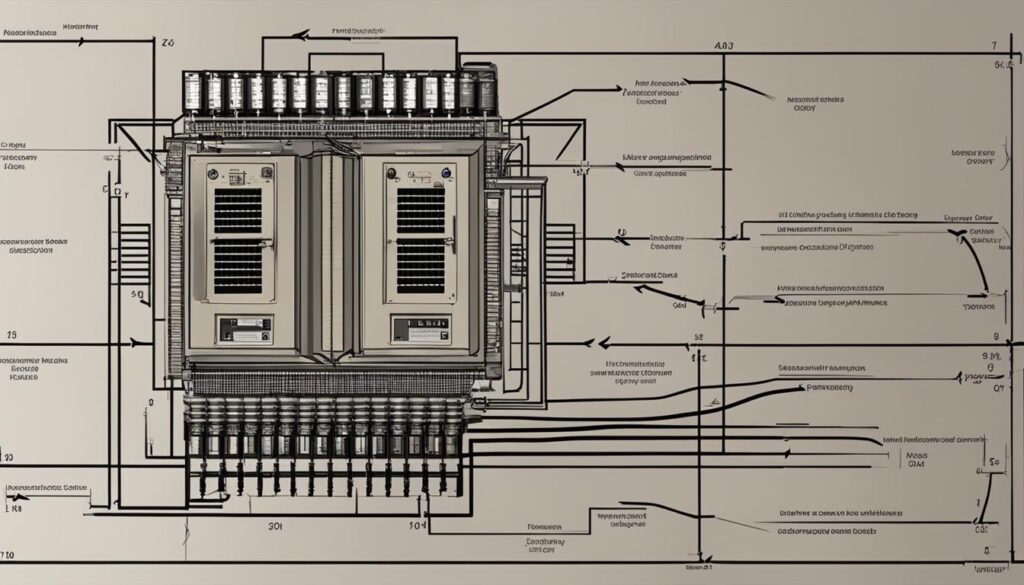Transformers play a crucial role in electrical systems, supplying the necessary energy from the generation source to power various buildings and establishments. However, not all transformers are created equal, and their capacity must be carefully calculated to ensure efficient and safe operation. This is where transformer load calculation comes into play.
Transformer load calculation involves determining the type and capacity of the transformer needed for a specific application. By considering factors such as the number of electrical appliances and their operating time, this calculation helps to accurately assess the power requirements of a building or establishment.
Calculating the transformer load capacity is pivotal for maintaining optimal performance and safety within electrical systems. It ensures that the transformer can handle the maximum current required by the load while operating within its safe limits. Inaccurate load calculation can lead to inefficiencies, safety hazards, and potential damage to the transformer and other electrical Factors.
Key Takeaways:
- Transformers are essential for supplying energy in electrical systems.
- Transformer load calculation helps determine the type and capacity of the transformer needed for a specific application.
- Accurate load calculation is crucial for optimal performance and safety.
- The difference between full load capacity and safe load capacity is important to consider in load calculation.
- Proper load calculation directly affects transformer efficiency and safety.
The Importance of Accurate Transformer Load Calculation
Accurate transformer load calculation plays a crucial role in ensuring optimal performance and safety in electrical systems. By accurately determining the power requirements and load capacities, you can select the appropriate transformer for your application. Let’s explore the various aspects and significance of transformer load calculation.
Identifying Your Power Requirements
Before performing any load calculation, it is essential to identify your power requirements. This involves determining the number of appliances and equipment that will be connected to the transformer, as well as the duration of their operation. By understanding the specific power needs of your electrical system, you can accurately calculate the load that the transformer needs to handle.
The Difference Between Full Load and Safe Load Capacities
It is important to distinguish between the full load capacity and safe load capacity of a transformer. The full load capacity refers to the maximum current that the transformer can transmit without exceeding its thermal limits. On the other hand, the safe load capacity is typically set at around 75-80% of the full load capacity to ensure optimal performance and safety. When performing load calculations, it is crucial to consider the safe load capacity to prevent overloading the transformer.
Impact of Load Calculation on Transformer Efficiency and Safety
Proper load calculation directly impacts the efficiency and safety of the transformer. Overloading the transformer can lead to excessive heat generation, resulting in reduced efficiency and potentially damaging the transformer. Conversely, underutilizing the transformer can result in poor efficiency and increased energy wastage. By accurately calculating the load, you can ensure that the transformer operates within its optimal range, maximizing efficiency while maintaining safety.

| Benefits of Accurate Load Calculation | Consequences of Inaccurate Load Calculation |
|---|---|
|
|
Transformer Load Calculation Explained
To determine the appropriate size of a transformer for a specific electrical load, load calculation is essential. This calculation is based on the output voltage and current requirements of the load. The accurate calculation ensures that the transformer selected can meet the power demands efficiently and safely.
The formula used to calculate the apparent power (kVA) or power (kW) of the electrical equipment is:
P = VI/1000
Where:
- P represents the apparent power in kVA
- V is the input voltage of the load
- I is the input current of the load
For three-phase transformers, the calculation formula incorporates a variation:
P = VI√3/1000
It is important to note that the specific transformer load calculation method / Transformer sizing method may vary depending on the transformer specifications and requirements of the electrical system.

| Equipment | Voltage (V) | Current (A) | Apparent Power (kVA) |
|---|---|---|---|
| Fridge | 220 | 2 | 0.44 |
| Air Conditioner | 230 | 6 | 1.38 |
| Laptop | 240 | 0.5 | 0.12 |
| Light Bulbs (10) | 220 | 0.25 | 0.055 |
In the table above, we have demonstrated how to calculate the apparent power for various electrical appliances. By summing up the apparent power values of all the equipment, we can determine the total load and select an appropriate transformer capacity. There is multiple transformer sizing calculator available on online platform.
Conclusion
In conclusion, proper transformer sizing plays a crucial role in ensuring efficient and reliable power supply in diverse applications. For optimal performance of electrical system it is essencial to calculate transformer load.The accuracy of load calculations, considering factors such as voltage taps, voltage ratio, method of connection, harmonic content of load, impedance values, insulation temperatures, paralleling transformers, insulation classes, and sound levels, is essential for selecting the right transformer for the job.
While load calculation is a significant factor, it is not the sole determinant in transformer selection. Other considerations beyond calculation also influence the choice of transformer. These factors can greatly impact the performance, efficiency, and safety of the electrical system.
To ensure the reliable operation of transformers, it is essential to follow best practices, such as regular maintenance and monitoring. By implementing these practices, potential issues can be detected and resolved promptly, ensuring the uninterrupted operation of the transformer and preventing costly downtime.
FAQ
What is transformer load calculation?
Transformer load calculation is the process of determining the capacity and type of transformer required for a specific electrical application based on the power requirements.
Why is accurate transformer load calculation important?
Accurate transformer power calculation is crucial for ensuring optimal performance and safety in electrical systems.
How do you identify power requirements for transformer load calculation?
Power requirements are identified by determining the number of electrical appliances and their operating time.
What is the difference between full load and safe load capacities?
Full load capacity is the maximum current that can be transmitted by the transformer, while safe load capacity is typically 75-80% of the full load capacity and ensures optimal performance and safety.
How does load calculation impact transformer efficiency and safety?
Proper electrical transformer load calculation directly affects transformer efficiency and safety by ensuring the transformer is correctly sized for the application, preventing overload or underloading.
How is transformer load calculation performed?
Transformer capacity calculation is based on the output voltage and current requirements of the electrical load. The apparent power (kVA) or power (kW) is calculated using the input voltage and current values.
What is the formula for transformer load calculation?
Transformer load calculation formula is P = VI/1000, where P is the apparent power in kVA. For three-phase transformers, the formula is P = VI√3/1000, with some variations in the calculation.
What factors besides load calculation influence transformer selection?
Factors such as voltage taps, voltage ratio, method of connection, harmonic content of load, impedance values, insulation temperatures, paralleling transformers, insulation classes, and sound levels also influence transformer selection.
What are some best practices for ensuring reliable transformer operation?
Regular maintenance and monitoring are crucial for reliable transformer operation.

